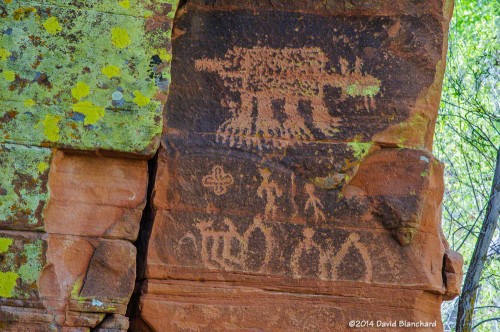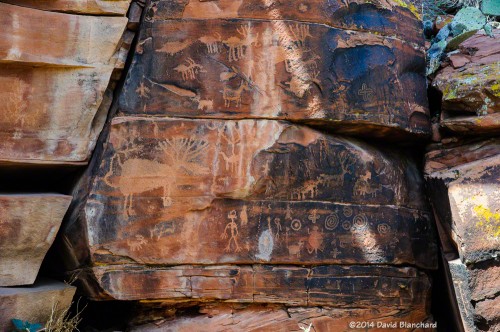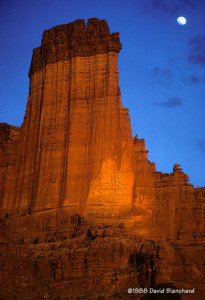Several days of cool and rainy weather across northern Arizona meant that there would be a chance of low clouds and fog in the Grand Canyon. The Grand Canyon under almost any condition is photogenic and rightfully named as one of the “Seven Wonders of the Natural World.” But it acquires a degree of surreal beauty when draped with clouds and fog infused with early morning light.
After browsing several weather sites to check on the latest radar, satellite, temperature and humidity data we decided that we would head out for the South Rim of the Canyon early the next morning. After awakening around 3 a.m., we were on the road by 4 a.m. and arrived at Desert View overlook around 5:30 a.m. Sunrise was 5:45 a.m. so this gave us some time to find a location and start taking pre-sunrise photos.
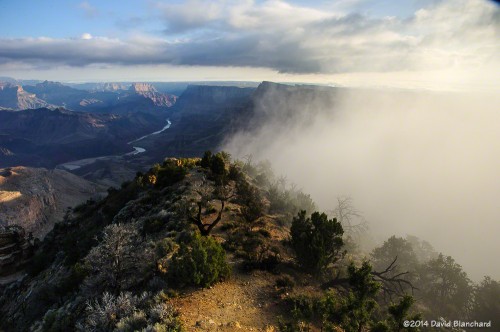
The fog was confined to a small side canyon located next to the Desert View overlook. This was remarkable as one side of the point of land was filled with fog while just a short distance away it was clear allowing a view deep into the canyon and the Colorado River below.

As the sun slowly climbed higher in the sky it began to produced dappled light on the cliffs on the North Rim. The higher elevation of the North Rim resulted in the clouds obscuring the cliff tops.
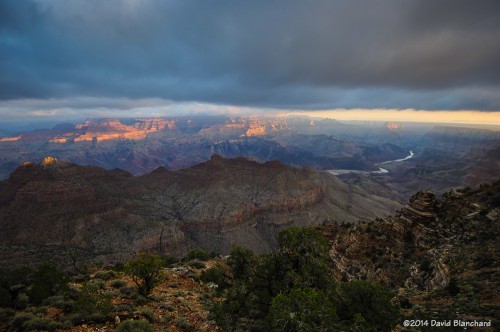
After an hour of shooting it was time to pack it up and move on to our next activity. We arrived at Grandview Point and started down the steep Grandview Trail to Horseshoe Mesa. This is an amazing trail and the engineering is wondrous. We returned to the top by noon to avoid the heat of the day and any potential for thunderstorms.

But now that we were back on top it was thunderstorms that I wanted so that I could photograph lightning. Although a few thunderstorms developed the lightning was unimpressive and distant and I was not able to capture any images. On the other hand, I was able to get a nice image of a rainbow below the rim. Because it was early afternoon and the sun was still high in the sky, the anti-solar point was well below the rim and so was the rainbow. It lasted only a few minutes and then it was gone.
Clouds, fog, beautiful sunrise, a great hike, and a rainbow. Not bad for one day.


